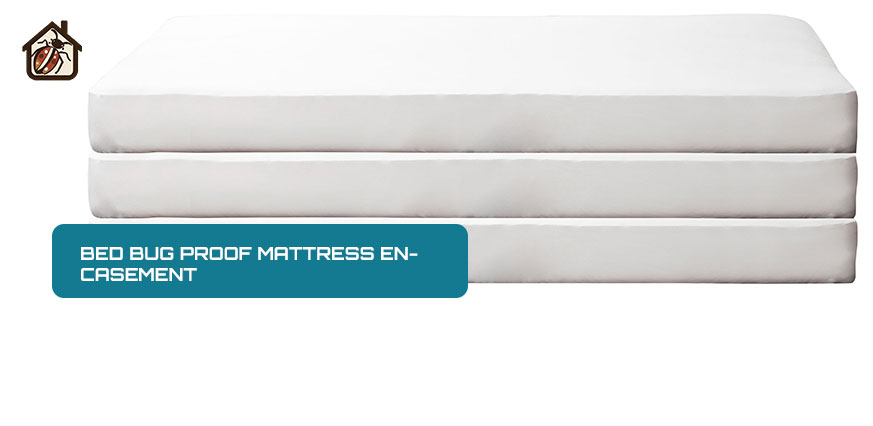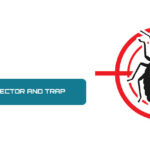 One of the last things anyone wants to think about when trying to ensure a restful night’s sleep is the possibility of bedbugs. These bothersome insects may transform a peaceful haven into a nightmare, inflicting pain and sometimes harmful health effects. Fortunately, bed bug-proof mattress encasements are an easy fix that may give you peace of mind and safeguard your mattress investment.
One of the last things anyone wants to think about when trying to ensure a restful night’s sleep is the possibility of bedbugs. These bothersome insects may transform a peaceful haven into a nightmare, inflicting pain and sometimes harmful health effects. Fortunately, bed bug-proof mattress encasements are an easy fix that may give you peace of mind and safeguard your mattress investment.
In this article, we’ll delve into what bed bug-proof mattress encasements are, how they work, and why they’re a smart addition to any bedroom.
What is a Bed Bug Proof Mattress Encasement?

Bed Bug Proof Mattress Encasement
A unique protective cover called a bed bug-resistant mattress encasement is made to completely encase your mattress, forming a barrier that keeps bed bugs out. Bedbugs, dust mites, allergies, and other potentially hazardous germs cannot pass through the tightly woven, high-quality fabric used to create these encasements.
How Does a Bedbug Proof Mattress Encasement Work?
The success of a bed bug-proof mattress encasement depends on how it is made. The mattress is completely encased by the covering, which extends to the top and bottom as well as all sides. It has a sturdy zipper closure that secures the mattress inside the encasement, typically supplemented by a reliable locking mechanism. As a result, bedbugs are effectively barred from a possible habitat for eating and reproduction and cannot enter or run away.
Types of Bed Bug Proof Mattress Encasements:
There are several types of bed bug-proof mattress encasements available on the market, each with its features and advantages. Here are some common types:
- Basic Encasements: These are typical mattress encasements made to completely enclose the mattress and act as a bedbug barrier. They are created from fine, densely woven cloth and frequently include a sturdy zipper fastening.
- Allergen-Proof Encasements: These encasements are intended to prevent allergens including dust mites, pet dander, and pollen in addition to bedbug protection. They are a great option for people who have allergies or respiratory problems.
- Waterproof Encasements: These encasements shield your mattress from liquid spills and stains in addition to protecting against bed bugs. They are particularly beneficial in homes with kids or animals.
- Deep Pocket Encasements: These covers are made to accommodate mattresses that are thicker, including pillow-top or memory foam mattresses. To meet the increased height of these mattresses, they feature bigger pockets.
- Encasements with Micro-Zippers: Some encasements feature micro-zippers, which have smaller teeth and tighter closures to create a more effective bed bug barrier. These can be particularly useful for preventing even the tiniest bed bugs from entering or escaping.
- Encasements for Box Springs: In addition to mattress encasements, you can find encasements designed specifically for box springs. Using both mattress and box spring encasements can provide comprehensive protection.
- Bed Bug-Proof Encasements for Pillows: For a complete bed bug protection solution, consider encasements designed for pillows. These encasements keep bedbugs away from your pillows, ensuring a thorough defense.
Step by step Guide on how to use a bed bug-proof mattress encasement
Using a bed bug-proof mattress encasement is a straightforward process, but it’s essential to follow the instructions carefully to ensure its effectiveness. Here’s a step-by-step guide on how to use a bed bug-proof mattress encasement:
Gather Supplies: Before you start, ensure you have the following items:
- Bed Bug-proof mattress encasement
- Clean mattress (free from bed bugs and debris)
- Pillow encasements (if applicable)
- Prepare: Ensure the mattress is clean and free from bed bugs or debris.
- Place Encasement: Put the encasement on the mattress, aligning corners and edges.
- Zip Securely: Zip the encasement shut, engaging any locking mechanism if present.
- Smooth and Adjust: Smooth out wrinkles for a snug fit, avoiding sagging or bunching.
- Optional Pillow Encasements: Put on pillow encasements for added protection.
- Make the Bed: Put sheets, blankets, and pillows back on the bed as usual, with the encasement underneath.
- Regular Inspection: Check for damage periodically, repairing or replacing as needed.
- Cleaning and Maintenance: Follow the manufacturer’s instructions for washing and care, keeping the encasement clean.
- Enjoy Peace of Mind: Rest easy, knowing your mattress is protected against bed bugs and other threats.
You may also like:
- Bed Bug Trap Interceptors: Your Ultimate Weapon Against Infestations
- Dealing with Bed Bugs in Las Vegas Strip Hotels
- The Uninvited Guests: Dealing with Chiggers on Bed
- Introducing the Game-Changing Bed Bug Detector and Trap
- Bed Bug Trap Interceptors: Your Ultimate Weapon Against Infestations
Benefits of Bed Bug Proof Mattress Encasements:
- Prevent Infestations: The primary benefit of a bedbug-proof encasement is its ability to prevent bedbugs from colonizing your mattress. This proactive approach eliminates the need for expensive and sometimes ineffective extermination treatments.
- Protect Your Mattress: A high-quality mattress is an investment in your sleep quality and overall health. A bedbug-proof encasement acts as a shield, safeguarding your mattress from stains, spills, dust mites, and allergens, which can prolong its lifespan.
- Ease of Maintenance: Bed Bug-proof encasements are easy to clean and maintain. Most are machine washable, making it simple to keep your sleep environment clean and hygienic.
- Allergen Protection: In addition to bed bug prevention, these encasements also act as a barrier against dust mites, a common allergen trigger. This is especially beneficial for individuals with allergies or respiratory issues.
Choosing the Right Bed Bug Proof Mattress Encasement:
When selecting a bed bug-proof mattress encasement, consider the following factors:
- Material: Look for high-quality, hypoallergenic materials that are breathable yet bedbug impermeable.
- Fit: Choose an encasement that fits your mattress size snugly to ensure there are no gaps where bed bugs could sneak in.
- Durability: Opt for a durable encasement that can withstand regular use and washing.
- Ease of Installation: The encasement should be easy to install and should not interfere with the comfort of your mattress.
- Customer Reviews: Read reviews from other customers to understand the encasement’s effectiveness and overall satisfaction.
FAQS:
Why do I need to encase my bed?
Will a mattress cover change the feel of my mattress?
How long do you need to leave a bed bug mattress cover on?
Can bed bugs live in a mattress covered with plastic?
Where do bed bugs hide if you have a mattress cover?
CONCLUSION:
Anyone wishing to safeguard their sleeping environment from bedbugs, allergies, and potential mattress damage would be wise to invest in a bed bug-resistant mattress encasement. These encasements offer peace of mind, a longer mattress lifespan, and a better sleeping environment by forming an impermeable barrier. Select the ideal encasement for your requirements, and you can relax knowing that your mattress is protected from pesky insects.


